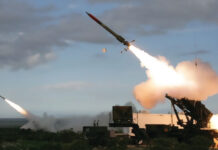Only two years after Secretary of Defense Robert Gates’ decision to end production of the F-22 Raptor at 187 aircraft, the program may be poised to rise like a phoenix from the ashes. When Gates made his decision, it was on the assumption that other countries — notably Russia and China — would not develop their own fifth-generation fighters for at least another decade or more. Yet, even as the Secretary met with his counterparts from the Chinese military, that institution announced the first test flight of the J-20, their entrant into the fifth-generation fighter competition. In addition, Russia has announced a cooperative program with India to build a similar aircraft, currently known as the T-50. Today, Secretary Gates’ threat projections look woefully wrong.
The emergence of the J-20 is but one example of China’s broad and deep investments in advanced military capabilities. Admiral Willard, Commander of U.S. Pacific Command, recently informed the world that China’s anti-ship ballistic missile system had reached its initial operating capability. This is a system with no parallel in the world; the U.S. has nothing like it. In addition, the defense department’s annual report on China’s military activities paints a darkening picture of increasing investments in nuclear and diesel-electric submarines, mine warfare, advanced surface-to-air missile systems, ballistic missiles, space surveillance and cyber warfare.
In his January 6 announcements of the results of the Department of Defense’s efficiency drive, the Secretary spoke about shifting much of the money saved into new programs clearly intended to counter the growing Chinese threat. He made particular mention of the funding of development of a new strategic bomber, one necessitated by the growing “anti-access” threat. This is a code word for China. He also called for additional deployments of missile defense interceptors both abroad and in the continental United States. This clearly reflects concerns about the ballistic missile programs in China, North Korea and Iran.
In view of the new appreciation of the threat it is time to bring back the F-22. Recent war games by Western think tanks have concluded that the projected U.S. tactical fighter force would be overwhelmed by the sheer number of less capable third and fourth-generation Chinese fighters. Add in the J-20 and the outlook for the U.S. military becomes decidedly bleak. Even when the F-35 Joint Strike Fighter is deployed this will not provide the U.S. with enough offensive capability given the limited number of F-22s that will be combat capable.
The F-22 has capabilities unlike any other fighter in the world. Its stealthiness allows the F-22 to engage hostile aircraft before it is even detected. The F-22’s high operational ceiling and speed creates a kinematic advantage that allows for engagements at the maximum range for its AMRAAM missiles. The combination of supercruise and stealth allows the F-22 to evade ground defenses and to escape air-to-air threats.
Ultimately, war has always been a numbers game. At some point, technologically inferior but numerically superior opponents will simply overwhelm the side with the better weapons. In conflicts between technologically equal adversaries numbers will determine the winner. While the F-22 is likely to be a better airplane than the J-20, 187 are not going to be enough to deal with a Chinese Air Force that is numerically superior and closing the technology gap with the U.S. Air Force. Before it is too late, the Obama Administration needs to resurrect the F-22 program and buy a couple hundred more.
 This analysis originally published by Daniel Goure, Ph.D. of the Lexington Institute
This analysis originally published by Daniel Goure, Ph.D. of the Lexington Institute
















